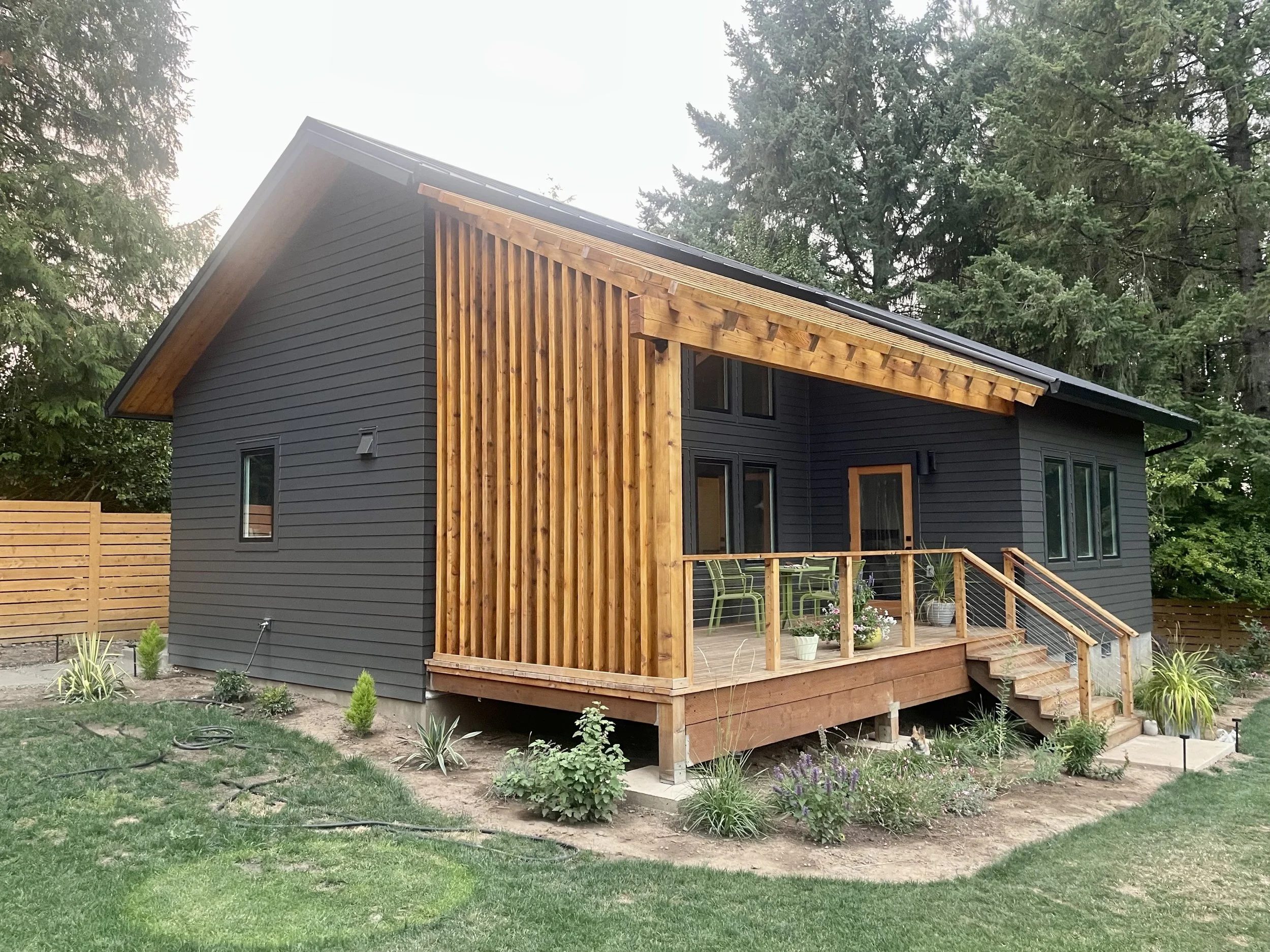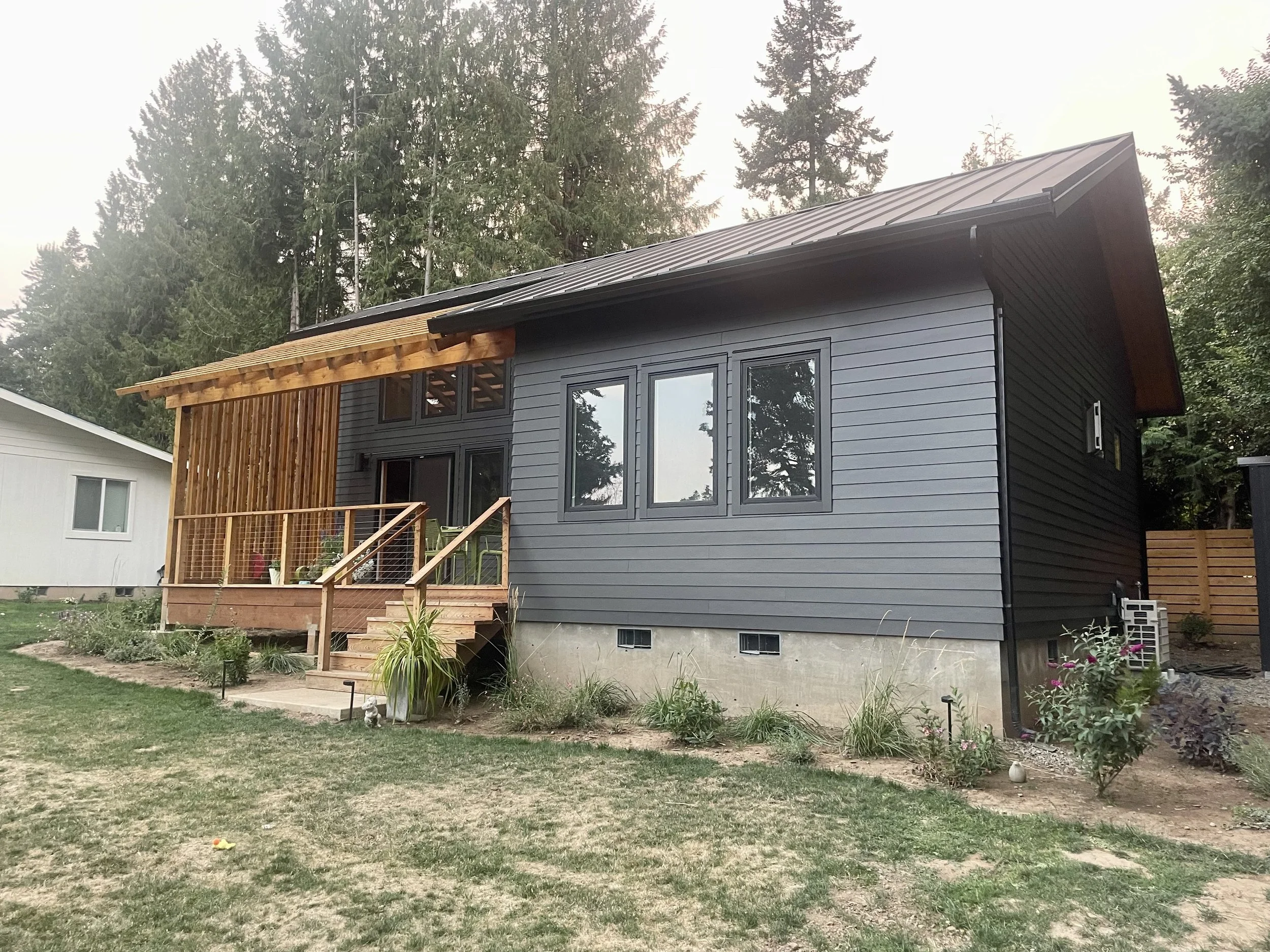Building an Accessory Dwelling Unit (ADU) can be an exciting way to add living space, generate rental income, or create a home for aging family members. But navigating the construction process can feel daunting, especially when it comes to finding the right general contractor (GC). This crucial decision will significantly impact your project's success, so careful consideration is essential.
This guide equips you, the homeowner, with the knowledge and steps to confidently find a general contractor who aligns with your vision, budget, and timeline for your ADU project.
Pre-Contractor Prep: Setting Yourself Up for Success
Before diving headfirst into contractor searches, some groundwork on your end will streamline the process and empower you to ask informed questions during interviews.
Solidify Your ADU Vision: Do you already have a design complete or have a specific design idea in mind? Typically a GC will want to see a rough design to be able to respond to. Think about the form of the ADU, its size, functionality (studio, one-bedroom, etc.), and any special features you desire. These all will affect the cost to build and the complexity of the construction process. Having a basic layout complete or browsing online inspiration boards like Pinterest or Houzz can be helpful. Or rely on drawings and images from your designer to set the direction.
Know Your Local Regulations: Building codes and permitting processes vary by municipality. Research your local ADU regulations to understand feasibility and potential limitations. This knowledge will equip you to discuss the project's regulatory framework with potential contractors. Again, it is probably best to have a designer on board as you do this prep work prior to beginning your search for the ideal builder.
Establish a Realistic Budget: Research average ADU construction costs in your area. Consider not just the build itself, but also architectural plans, permitting fees, and potential utility upgrades. A realistic budget will guide your contractor selection and keep your project on track financially. It is also best to not just use cost per square foot calculations that you find on the internet. They are rarely accurate and very misleading. Instead ask around and find total project costs for similar projects. Walk around your neighborhood and find properties that have ADUs and ask their owners what the total project cost was. This will be the best way to get some accurate information. Your design team should also be a great resource to share information on construction costs of similar project.
Finding Your Contractor: Where to Look and How to Narrow Down Options
Talk to Your Designer: chance are you hired a design team because they have some experience on similar projects. Leverage that experience by asking them to recommend contractors they have worked with in the past that have successfully completed projects on time and on budget. The design team will probably have a handful of go-to contractors they like working with and would recommend for your project.
Leverage Your Network: Talk to friends, family, and neighbors who have built ADUs. Personal recommendations are a goldmine, offering valuable insights into contractor performance and potential red flags. Ask them about the outcomes, the communication style, what happened when there were bumps in the road. This sort of insight will be a great way to assess if a contractor is worth interviewing for your ADU project.
Online Directories and Review Platforms: Websites like Houzz, the National Association of Home Builders (NAHB), and the Better Business Bureau (BBB) allow you to search for licensed contractors in your area and view customer reviews. There are probably local directories in your area as well. Read reviews, peruse company portfolios and select the companies that have worked on similar projects and share your values.
Specialty ADU Contractors: Consider companies specializing in ADU construction. Their experience with ADU-specific regulations and construction techniques can be invaluable and help avoid costly mistakes.
Qualifying Potential Contractors: The Interview Process
Once you have a shortlist of potential contractors, it's time for background research and in-depth interviews. Here's how to effectively assess each candidate:
Licensing and Insurance: Verify the contractor holds a valid license in your state and has adequate general liability and worker's compensation insurance. Ask for copies of these documents. Check with the National Association of Home Builders (NAHB), and the Better Business Bureau (BBB) to verify the information and see if there are any complaints or legal issues with the company.
Experience with ADUs: While general construction experience is valuable, prioritize contractors with a proven track record of successful ADU projects. Ask to see examples of their past work, ideally in your area and with similar ADU styles.
Communication Style: A comfortable working relationship is key. You will be working with this team for many months in a stressful environment. Assess the contractor's communication style during the interview. Are they responsive, clear, and patient with your questions? Ask to speak with the project manager or any team member that will be leading the project if it won’t be the business owner or person you interview during the selection process.
Project Timeline and Budget: Discuss your ADU vision, budget, and desired timeline with each contractor. Get detailed quotes outlining the scope of work, materials, and projected costs. There will be more about how to compare bids below. Be wary of quotes significantly lower than the average – they could indicate cutting corners or missing items that will be added later.
References: Request a list of references from previous clients. Contact these individuals to get firsthand accounts of the contractor's work ethic, communication, and problem-solving skills. Ideally these references are people who built similar types of projects.
Beyond the Interview: Additional Considerations
The Contract: Before signing any agreements, have a lawyer review the contract. The contract should clearly outline the project scope, timeline, budget, payment schedule, and change order procedures. Don't hesitate to ask questions and ensure you are comfortable with all the terms before signing.
Permits and Inspections: Inquire about the contractor's experience navigating the ADU permitting process in your area. Although your design team may be leading this process, or perhaps you are taking it on to save costs, there will be times when the contractor may get involved. Working with a an experience team can help navigate the complexities of permit review and save time.
Dispute Resolution: The contract should outline a clear process for resolving any potential disputes during construction.
Building Trust and a Strong Partnership
Finding the right general contractor is an investment in the success of your ADU project. By thoroughly vetting candidates and prioritizing clear communication, you can build a strong partnership with your GC and navigate the construction process with confidence.
Bids
When you ask GCs that you are interviewing for estimates or bids for the project, you will not be getting them in a standardized format. Each construction company handles bids differently. Your job as the homeowner is to review the bids when they come in and develop a process to interpret them so you can compare apples-to-apples. If you are unsure how to do this, ask your design team to help.
Often this means setting up your own spreadsheet or document and reorganizing the numbers you get from the builders so it is easier to compare across companies. The goal is to not just look at the total cost at the bottom of the bid, but to look at each line item to see if there are any outliers or red flags that need a more thorough review.
For example, if one company has the window package at $30,000 and another only shows it at $10,000 that is red flag. You will want to ask more questions of those companies to clarify how they calculated their numbers to make sure they didn’t make a mistake.
By understanding how a company calculated their costs you can build trust with that team. This also means that you don’t always want to go with the lowest bid. The lowest bid might mean they are missing items, didn’t take the full cost into consideration, and may have a lot of costly change orders throughout the project.
In fact, we rarely recommend hiring the cheapest builder.
Specific Questions to Ask As You Interview Builders:
How big is your team?
The size of the General Contractor’s company can shine a light on their resources, capacity, and organization. Often a larger company would have a dedicated project manager to lead your project, may be able to handle more complex projects, and may have in-house teams perform some of the work rather than subbing it out to other companies.
That doesn’t mean bigger companies are better for your project though. Small contractors offer some advantages as well. You might be working directly with the company owner, getting a more personalized service. Or they may be more affordable with less overhead expenses.
How many projects of a similar type and scale have you done recently?
You don’t want to hire a company that works on large multi-million dollar estates, or commercial buildings, to build a small ADU project. Their team won’t have the right experience. You want someone familiar with the type of project you are building so they can bring lessons learned from other projects to your build.
How many recently completed projects have come in on or under budget?
You want someone who has a track record of managing the construction budget. No one likes cost overruns or being surprised part way through the build with expensive change orders or requests for additional payments. Ask for case studies showing they can keep your project on budget. The answers to this question should reflect the companies ability to manage their team, the schedule, and the execution of the project.
How many recent projects have come in over budget?
You want to know if projects have come in over budget and then ask why. There are many reasons a project may go over, and it isn’t always the contractor’s fault. Maybe a client changed something, or material costs went up unexpectedly, or something was discovered during excavation that affected the project. The point is you want to learn why budget overruns happened and how the builder handled these situations.
Who will be the day-to-day contact?
Often there will be a project manager or site superintendent that will be your day to day contact on site throughout the project. You need to know who this person will be and make sure you can build a strong report with this individual. Their communication process will be key to the success of the project. They will also be in charge of managing all the various aspects of your project and the quality of their management skills is vitally important.
Bonus Tip:
Throughout the construction process, maintain open communication with your contractor and the design team. Schedule regular meetings - often called OAC (Owner, Architect, Contractor) meetings - to discuss progress, address any concerns promptly, and ensure the project aligns with your vision. And remember, it is always cheaper to make changes or work through problems on paper rather than in the field when things are getting built. Don’t cheap out by not engaging your design team to assist during the construction phase. They can save thousands of dollars and lots of time by helping answer questions, clarifying details, and troubleshooting the inevitable challenges along the way.
Next Steps for Your ADU
As discussed above, it is best to have a design in place as you begin your search to a builder to construct your ADU project. This is why starting with one of our pre-designed ADU plans can help you kickstart your project and save significant time. Take a look at our collection of modern ADU designs and find the layout that best suits your project goals and property.
















